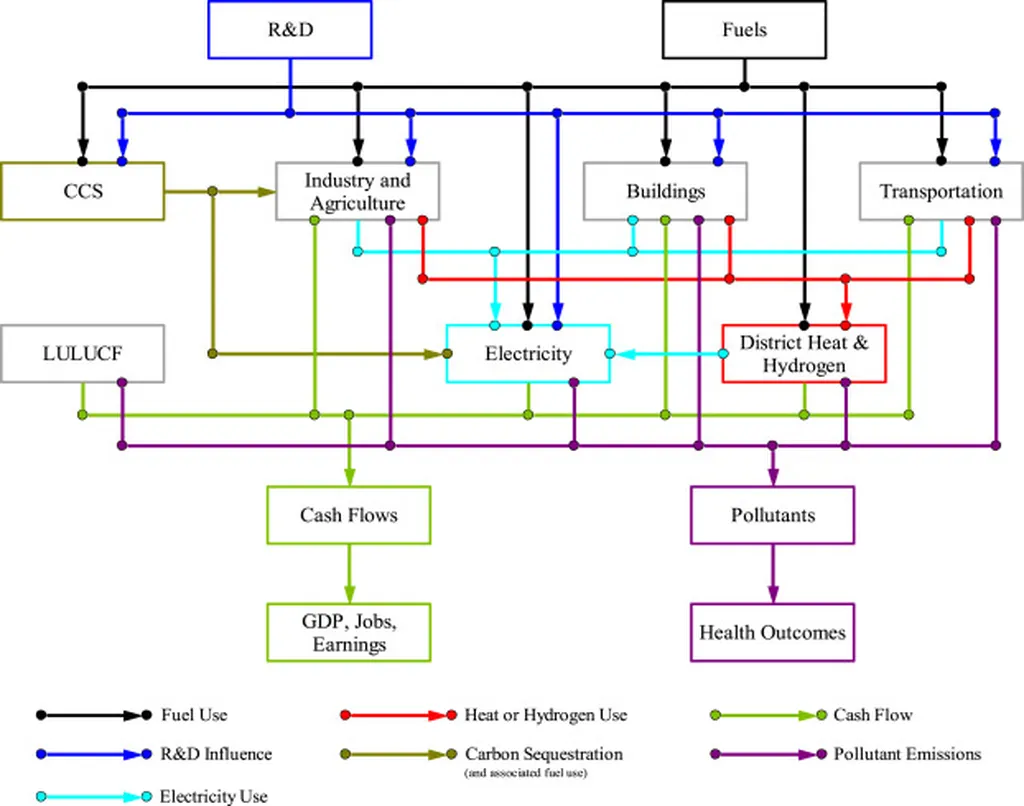In the quest to meet ambitious “Dual Carbon” goals—aiming for carbon peaking and neutrality—integrated energy systems are under the microscope like never before. A recent study published in the journal *Energies*, titled “Research on Portfolio Strategies for Low-Carbon Transition Pathways in Electricity-Heat Nexus Systems Incorporating Multi-Device Integrated Systems,” offers a promising blueprint for the energy sector. Led by Jingyu Li from the School of Electric Power at Inner Mongolia University of Technology, the research delves into the complexities of optimizing combined heat and power (CHP) systems to balance economic, environmental, and operational demands.
The study introduces an innovative framework that couples CHP units with a diverse array of auxiliary technologies, including electric boilers, heat pumps, thermal energy storage, and carbon capture and storage (CCS). This multi-dimensional approach aims to achieve what Li describes as a “synergistic optimization” of economic viability, low-carbon performance, and operational flexibility. “The key challenge,” Li explains, “is to integrate these technologies in a way that not only reduces carbon emissions but also ensures cost-effectiveness and reliable energy supply.”
To tackle this challenge, the research team developed an electro-thermal optimization model that incorporates multiple devices, such as CHP-CCS, electric boilers, heat pumps, and thermal energy storage. They then established a comprehensive evaluation index system that assesses performance across four critical dimensions: economic efficiency, operational flexibility, low-carbon performance, and technology readiness level. This holistic approach allows for a nuanced comparison of different coupling configurations.
One of the study’s standout contributions is the introduction of the Tanimoto coefficient to refine the similarity measurement in the Technique for Order Preference by Similarity to Ideal Solution (TOPSIS) methodology. This enhancement improves the accuracy of optimal solution selection, ensuring that the chosen configuration aligns closely with the desired outcomes.
The findings reveal that the configuration integrating CHP-CCS with electric boilers and heat pumps emerges as the optimal pathway. This setup not only ensures reliable electricity and thermal load supply but also significantly reduces system-level low-carbon transition costs and carbon emissions. Moreover, it enhances the accommodation of renewable energy sources, a critical factor in the transition to a low-carbon future.
The implications of this research are far-reaching for the energy sector. By providing a robust framework for integrating multiple technologies, the study offers a roadmap for energy providers to navigate the complexities of the low-carbon transition. “This research underscores the importance of a holistic approach in energy system design,” Li notes. “It’s not just about adopting new technologies; it’s about integrating them effectively to achieve our sustainability goals.”
As the energy sector continues to evolve, the insights from this study could shape future developments in integrated energy systems. By prioritizing economic viability, operational flexibility, and low-carbon performance, energy providers can make informed decisions that drive the transition toward a more sustainable and resilient energy future. The research, published in *Energies*, serves as a valuable resource for policymakers, industry leaders, and researchers alike, offering a comprehensive guide to optimizing integrated energy systems for a low-carbon world.

